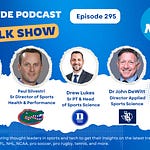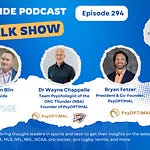This week we had the honor to interview Matt Miesnieks, the CEO of Living Cities, a leading metaverse platform.
Living Cities was launched recently with $4 million in seed funding from DCVC, Eniac Ventures, Anorak Ventures, and Matthew Ball. The company aims to integrate the digital and physical worlds. It’s still stealthy but wanted to come out of the woodwork to begin recruiting talent.
Living Cities brings real places into the Metaverse, with live updating digital twins and stunning visual fidelity, to truly capture the Spirit of the place. Metaverse spaces have been static & empty locations, and Living Cities aims to ensure people who can't visit physically can get the closest thing to being there by visiting virtually
Matt Miesnieks is an established entrepreneur in the AR world. Most recently, he sold his spatial mapping company 6D.ai to Niantic so that it could cultivate some of the moves noted above. The team also includes John Gaeta who basically created, and won an Oscar for, the Matrix. He’ll be chief Imagineer, which is similar to the role he played in his former post at Magic Leap. And then there’s Dennis Crowley of Foursquare fame, hence the Foursquare ties noted, who is the head of product.
Show Notes: Through this interview, we touched on his background, his startup Living Cities, his product, and business model. We also discussed his take on the metaverse space, and his plans for the next 12 months.
Best Quotes: Here are some of the key discussion points and best quotes from our conversation with Matt:
On his background:
“I started working professionally in tech 30 years ago, bringing PCs, Macs and things online with the first wave of internet. I spent a decade or so working for the company that invented the mobile web browser, bringing sort of all mobile and smartphones online to the internet. At the end of that, I was thinking, what comes after the phone? What are these trends around natural interfaces and sensing? I basically became convinced that what we're calling augmented reality or XR was that next wave of innovation”.
“And I spent 10 years or so working with different AR startups. I spent some time at Samsung as well. And then I started a company called 6D.ai, which was acquired by Niantic a couple of years ago. And what we were doing at 6D.ai was really trying to build a software to really understand the real world so we built this 3D map of everything. And at 6D.ai we built a computer vision software to capture that data”.
On his new startup Living Cities:
“My new company Living Cities was really built on watching the trends in computer vision around capturing the real world in a photo realistic way. Trends in game engines and virtual cinema production, meaning things that used to be very expensive and needed custom hardware for AAA films are now available off the shelf to regular programmers”.
“I studied metaverse experiences like Roblox and I realized that these sorts of products weren't really just games anymore. They were social platforms and combined with my background in capturing reality I started to think “well what happens if this type of user experience was overlaid on top of reality with a Fortnite kind of looked like Google Earth experience? What would that mean?” And that sort of insight there around taking a copy of a photo realistic copy of a real place, and then allowing the people that are really there physically to interact with the people that are present virtually”.
“Our experience will look like Google earth. I will look like a real photo, or a real representation of a real place, except that now you can drop characters or your avatars in there, and they can move around and see, interact with each other and do whatever you need to do, and if you do happen to physically be in a place, you'll show up also in that same place virtually as you are physically”.
On the demographics and segment his startup plans to target initially:
“We're looking at the consumer social space. This is is our first use case, and that’s the product that we're taking to market. And in terms of partners or customers we're working with, we have had requests from places that have some really interesting and popular physical locations whether that's a concert venue or a theme park. And those venues want to open up these real world places to people so they can experience them virtually and cannot be there physically”.
On the fact that some teams have a large footprint of fans internally that have never been to their stadiums before:
“It doesn't surprise me in some ways that 90% of the PSG fans are fans located internally and that have never been to a PSG game physically, because we've had conversations like this with a number of organizations and just like pro teams they're all the same and all these companies are doing live events inside the metaverse right now”.
On the issues with the existing virtual metaverse experiences like Roblox or Fortnite and how they intend to disrupt that space:
“The problem is that none of those virtual places like Roblox or Fornite feel like the real place. They're kind of these very low visual fidelity or completely artificial places. So what we're really working on is how do you capture the spirit of those places?”.
“And part of that is to deliver a very high visual fidelity and we've found a way to deliver that to low end devices. And then we want to bring a whole lot of live data feeds from a physical place into the metaverse. So simple things like accurate weather and time of day and sunlight and all that stuff so that it looks correct. But then there are things like the wind and things blowing around, but even to the point of depending on permissions and things we can bring to life to people into the metaverse as well”.
On how they could bring a very unique experience to sports fans:
“So if there was a game going on on the field, with the right cameras around the field, we could bring a volumetric 3D representation of that game or that concert, whatever it is, and then render it in real time inside the virtual metaverse experience”.
On their business model and their plan to focus on the B2C space first:
“We're building our own consumer product and we are targeting the B2C space because we need to dog food our own technology. It will be entirely web based, and that means that we're able to offer it on any browsers,=. Then you just power your computer and you are all good to go. And we also built some economic utility into the platform”.
“As a user, you're basically treated as a private currency inside the venue. And that can also be exchanged into real currency if you want to. So we're not looking at a JPEG that you can speculate on financially. It's more a case of look: “here's a frequent flyer reward program. It's your own currency, but you can then exchange that back out for real world rewards or cash, depending on the policies you are going to put in place”.
“For now we're just really working on: How do you get back in Roblox? How do you get consumers to entertain each other? And how do you encourage them to trade, buy and sell from each other, like virtual goods as well as physical goods? And from there we can open up to third parties, whether that's a brand or venue”.
On his take on the metaverse space:
“I think the trick, when you look at the metaverses is really to say, look, what's gonna be successful this year and next year and the following year? It'll be different things in those years. And if you aim too far ahead, you'll be too early, and you'll fail. And if you're too late, then you're kind of not viewed as being innovative and you missed the train”.
“And if you're telling someone that's a virtual copy of a real place, it needs to feel like the real place. It should not just look like an empty 3D model of the real place. It needs to look real. That's why it needs to feel real so that's where you need to get lighting and weather and this need to be updated in close to real time. It isn't just the static thing. There are so many metaverse experiences and virtual spaces right now that are just empty virtual worlds”.
“This is why we called the company Living Cities because it's that, it's about bringing it to life. It is the magic”.
On his plans for the next 12 months:
“This weekend we just got an internal demo of the tech where it was all connected up and it worked. So the next six months will be about iterating on the user experience and user testing and just building out all of the supporting capabilities in our tech. And then the six months after that will be about ramping up for the public launch”.
On his cofounders Dennis Crowley and John Gaeta:
“My co-founder is Dennis Crowley who you mentioned and John Gaeta who did all the visual effects in the matrix films (..) So John just brings this amazing network and expertise in sort of making AAA cinema quality visuals, and the bleeding edge in terms of game engines”.
“So John definitely helped a ton in that creative strategy thinking, but Dennis's background is really about: how does software impact the real world with decades of focus on how it touches an individual consumer in their day to day life. And how does that affect socializing in the real world and entertainment? And he's always been interested in bringing the software down to reality rather than go off into a virtual world and disappear into the software. Dennis is heading up our product development”.
“When you get together and you have been successful like we have from different backgrounds, that helps a lot with investors, the hiring process, and with customers”.
PS: Please note that next Tuesday we will not publish any new podcast interviews or analysis as we are taking a little break. We will be back on Thursday July 14.
You may also like:
🔮 2022 Upside Top Sports Tech Predictions (NFT/Metaverse, Sports Performance, IPOs/M&As..)
🔗 🔥 Upside Analysis: NFTs Vs Crypto Vs Digital Currency, How Are They Different?
🔥 Upside Chat: Dave Hancock, CEO, Apollo (Leading Athlete Management Systems (AMS) vendor)
🔥Upside Chat: Alexi Pianosi, Strengths and Conditioning Coach, Pittsburgh Penguins (NHL)
🔥Upside Chat: Pierre Barrieu, High Performance Director, Toronto FC (MLS)












